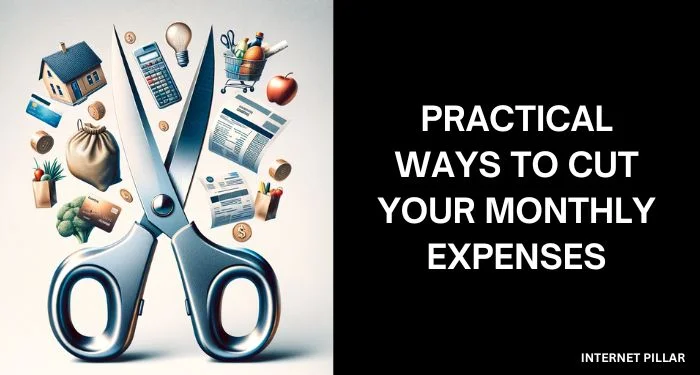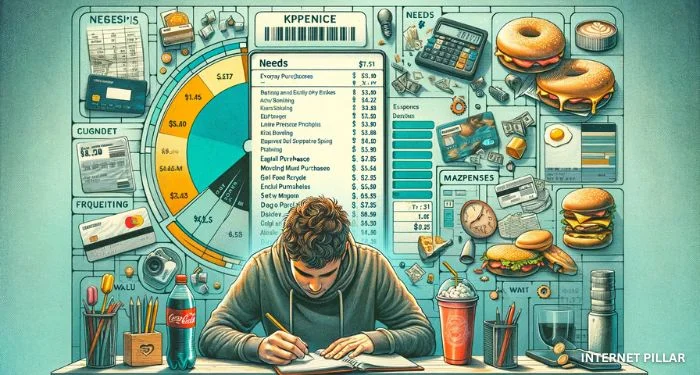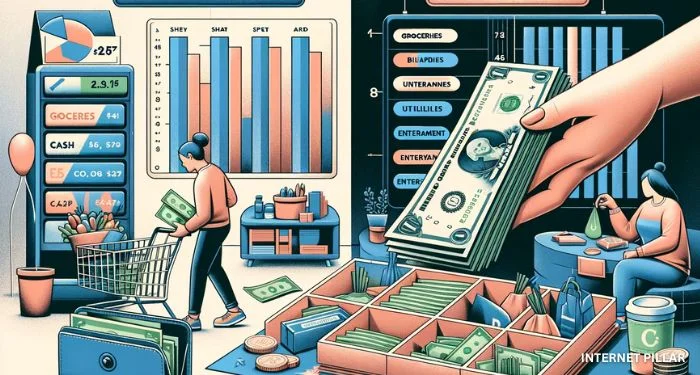Reducing debt starts with cutting expenses which is both simple and challenging at the same time.
People often find it tough to reduce spending as they’re accustomed to their lifestyle.
However changing our mindset is important and carrying debt shouldn’t be seen as normal.
Reducing expenses should be viewed not as a sacrifice but as a necessary step to control finances.
Making small changes in your daily routines can gradually impact finances over time. Often the issue isn’t income but overspending.
To save money it’s important to identify and reduce unnecessary expenses.

In this article, I have curated some ways to cut down your expenses in everyday life including food items, utilities and transportation.
15 Practical Ways to Cut Your Monthly Expenses
1. Keep Track of your Spending
Tracking your expenses is key to understanding your financial habits. Record everything even small purchases like soft drinks.
This detailed tracking whether through notebooks or apps offers insight into your spending patterns.
You’ll likely discover surprising expenses like frequent Kindle purchases, bread, milk or daily essentials.

Differentiate between ‘needs’ and ‘wants’ by reviewing card statements or categorizing expenses manually. This will help identify areas for cost-cutting.
2. Make a Budget
Creating a budget involves knowing your income expenses and planning to save the surplus.
Methods vary from detailed tracking to simpler strategies like the 50-30-20 rule (50% for needs, 30% for wants and 20% for savings).
Prioritizing financial goals especially debt repayment is important.
A budget while potentially simple should cover fixed bills necessities and discretionary spending with room for savings and debt repayment. Online tools and apps can assist you in this process.
3. Cut down Electricity Bills
Reducing utility bills can significantly lower expenses with electricity being about 12% of average household budgets.
Simple actions like using LEDs instead of incandescent bulbs optimizing thermostat settings and unplugging unused devices can lead to savings.
Other measures include lowering water heater temperatures and using energy-efficient appliances.
These changes not only cut costs but also contribute to energy conservation.
4. Lower your Housing Expenses
Housing often represents a major portion of expenses.
For those earning below $50,000 it can exceed 36% of income surpassing the recommended 30%.
Options to reduce this include downsizing relocating to cheaper areas getting roommates or negotiating rent.

Homeowners can consider the benefits of renting which offers lower monthly payments and fewer responsibilities like repairs and upfront costs.
5. Reduce Insurance Premiums
Shopping around for better insurance deals can lower monthly expenses.
For car insurance, you can consider providers offering discounts for safe driving or cars with safety features.
Similarly homeowners can reduce premiums by installing safety devices or updating systems.
Increasing deductibles can also result in lower premiums.
Regularly reviewing and comparing insurance policies ensures you’re not missing out on better rates or discounts for loyalty or bundled services.
6. Eat at home to Save
Eating at home is significantly cheaper than dining out.
You don’t need to be a gourmet chef; plenty of cookbooks and online tutorials can guide you.
Cook in bulk freeze extra portions and use coupons for added savings.
Weekly meal planning and preparing dishes in advance like casseroles or chili can make home dining both easy and economical.
7. Shop Smartly with a List
Creating a shopping list is a simple yet effective way to save money on groceries.
This approach minimizes impulse buying and helps with meal planning. Use apps for list-making and finding deals.
Organize your list by store layout to avoid temptation aisles and compare prices to get the best deals.
Joining store reward programs can offer further savings.
8. Prioritize Cash Transactions
Using cash for purchases can drastically curb overspending.
Automatic payments for fixed expenses ensure they’re covered and using cash for other purchases makes budget adherence easier.

This method can be more effective than card use as it limits spending to available cash encouraging more mindful purchasing decisions.
9. Pay off Debt
Paying off debts especially high-interest ones like credit card debts is essential for financial health.
Refinance if possible and prioritize debts with the highest interest rates.
Make debt repayment a fixed part of your budget aiming to pay more than the minimum.
Reducing debts frees up resources for other financial goals.
10. Freeze Credit Card Use
Limiting access to credit cards can prevent impulsive spending. Keeping them out of reach or even literally freezing them in ice can provide a barrier against rash purchases.
Temporarily freezing credit accounts through the issuer’s website or app is also effective.
This method blocks new charges while allowing for existing commitments and can be a powerful tool in managing finances and reducing expenses.
11. Smart Shopping with Sales and Coupons
Maximize savings by using coupons and shopping for sales.
When making your shopping list include sale items and use coupons judiciously.
Bulk-buy non-perishables on sale choose seasonal fresh foods and opt for generic brands over name brands.

Coupons whether digital or paper can offer significant discounts so keep an eye out for them in various forms.
12. Cut down Cable TV and Landline bills
Cut unnecessary costs by eliminating cable TV and landline phone services.
With numerous streaming options cable TV can often be replaced for a fraction of the cost.
Assess your actual usage of streaming services to avoid paying for ones you don’t use.
Similarly if you have a cell phone a landline may be redundant.
13. Review and Cancel Unneeded Subscriptions
Regularly evaluate your subscriptions and memberships.
Cancel those you don’t use or need like gym memberships or delivery services.
Contact providers to negotiate better rates or temporary suspensions.
Regularly check bank statements to ensure you’re not unknowingly paying for forgotten subscriptions.
14. Prefer Public Transportation
Using public transportation can be more cost-effective than driving especially when considering fuel parking and vehicle maintenance costs.
Compare these expenses with public transit fares to determine potential savings.

Alternatives like biking, walking or carpooling can further reduce transportation costs and might even allow for selling your vehicle.
15. Sell Unused Items
Selling items you no longer need is a great way to supplement your income.
Organize a garage sale or use online platforms like eBay to sell clothes, electronics and other valuables.
This strategy won’t cut expenses but can help balance your budget by generating some extra cash.
I hope these tips will help you to manage your monthly expenses.



